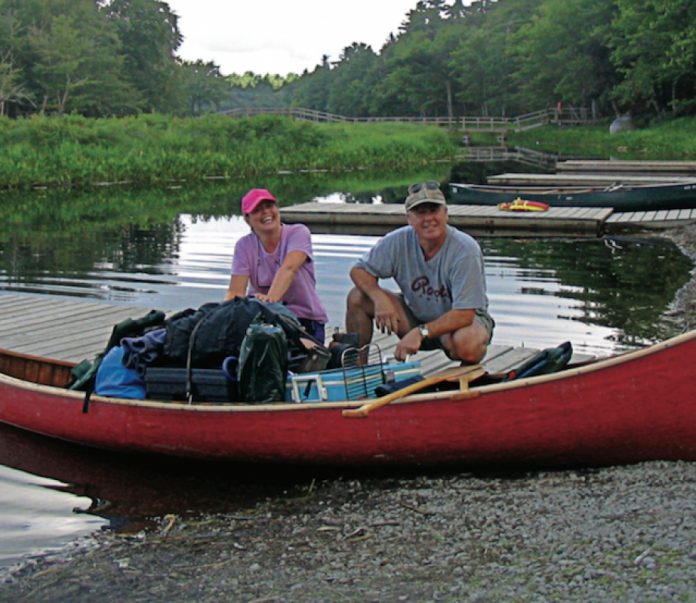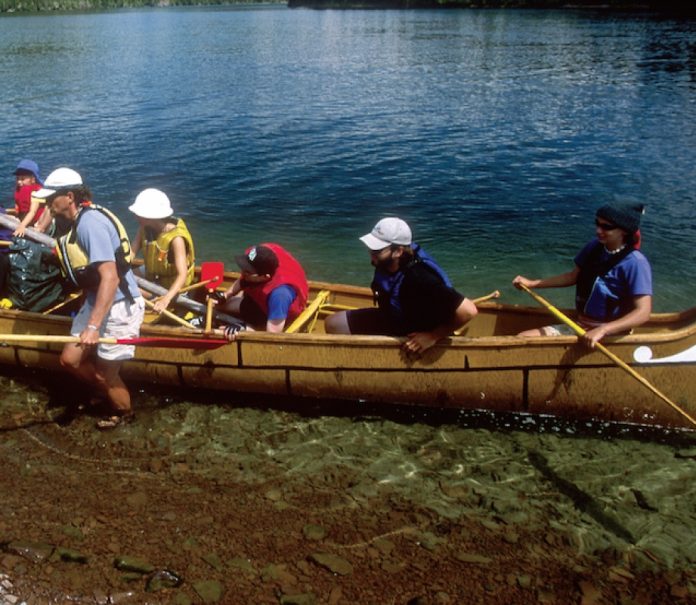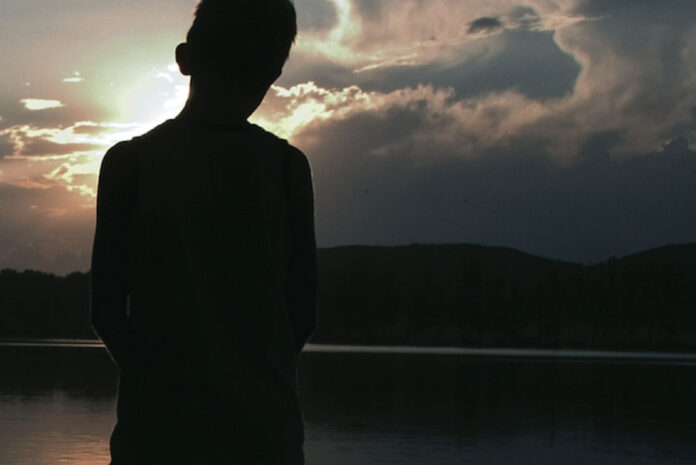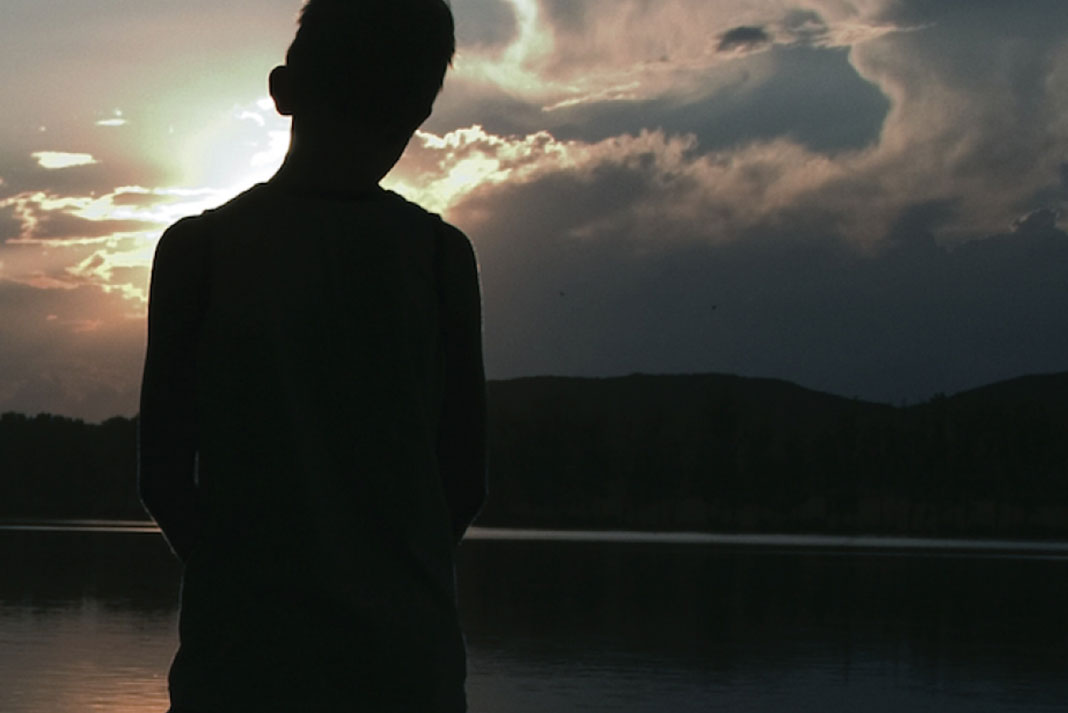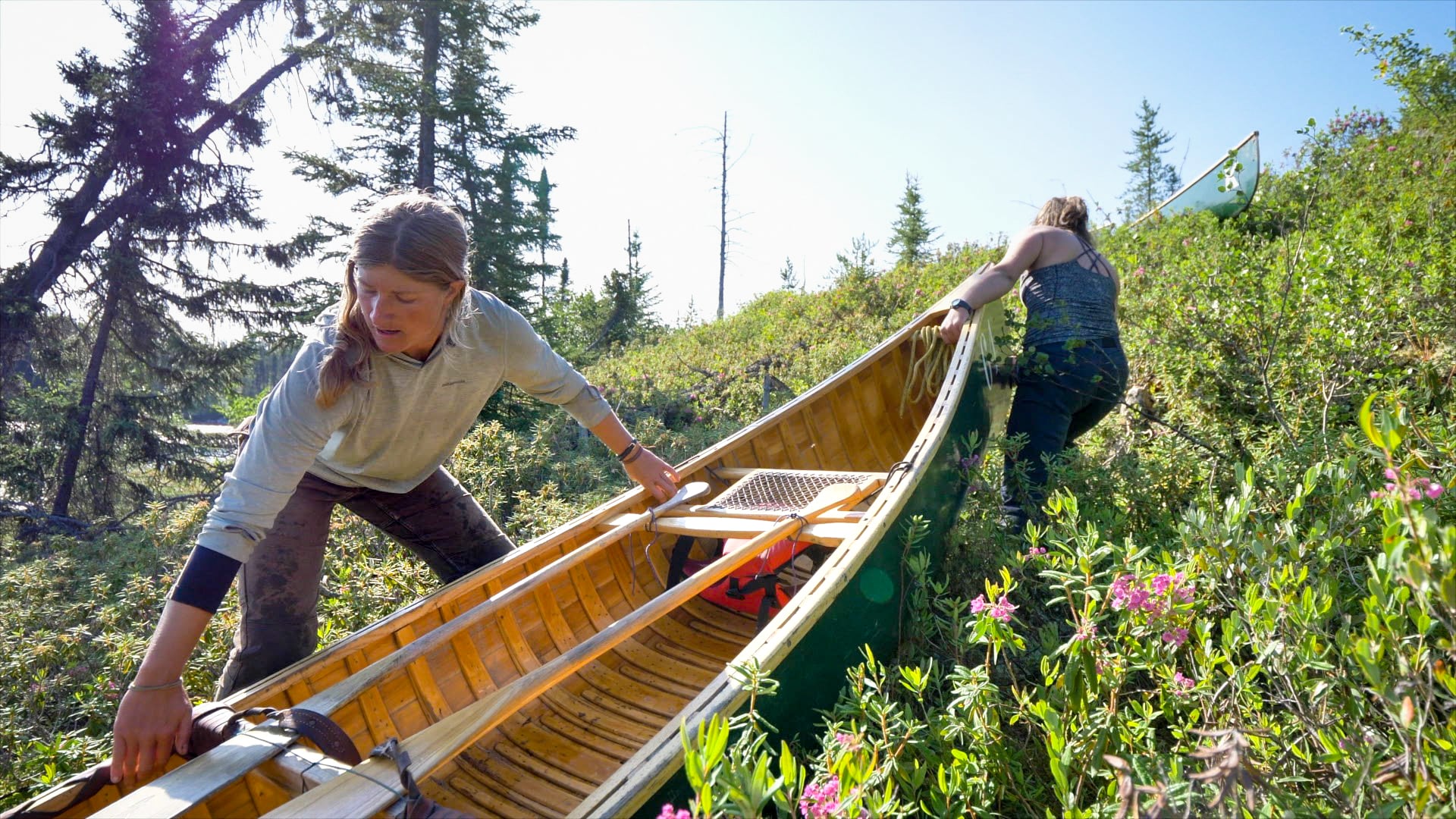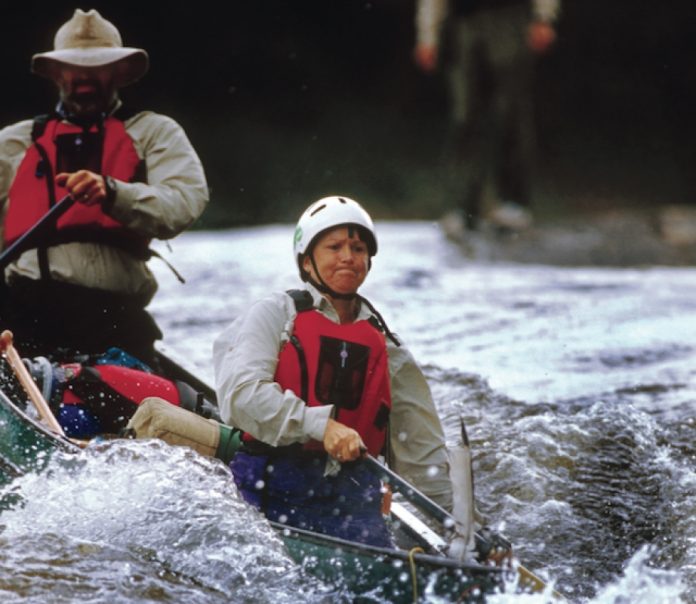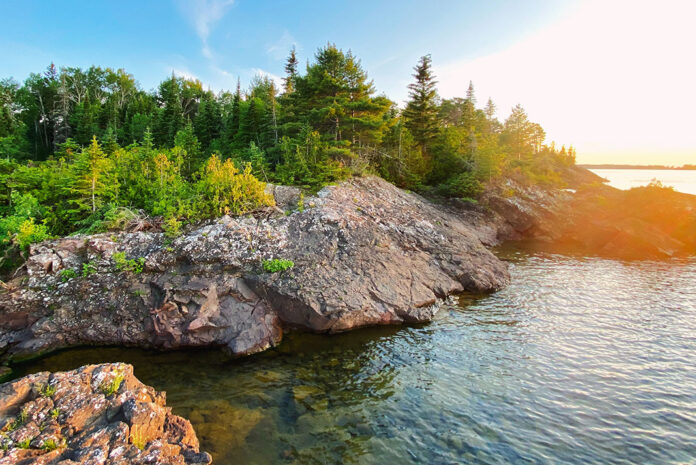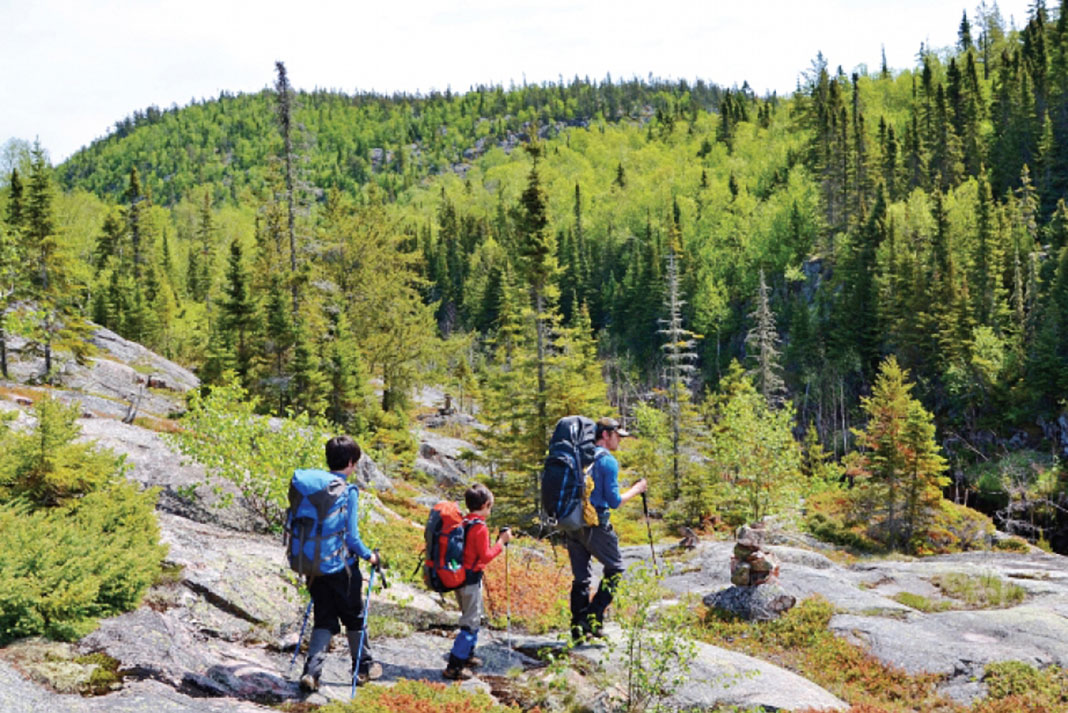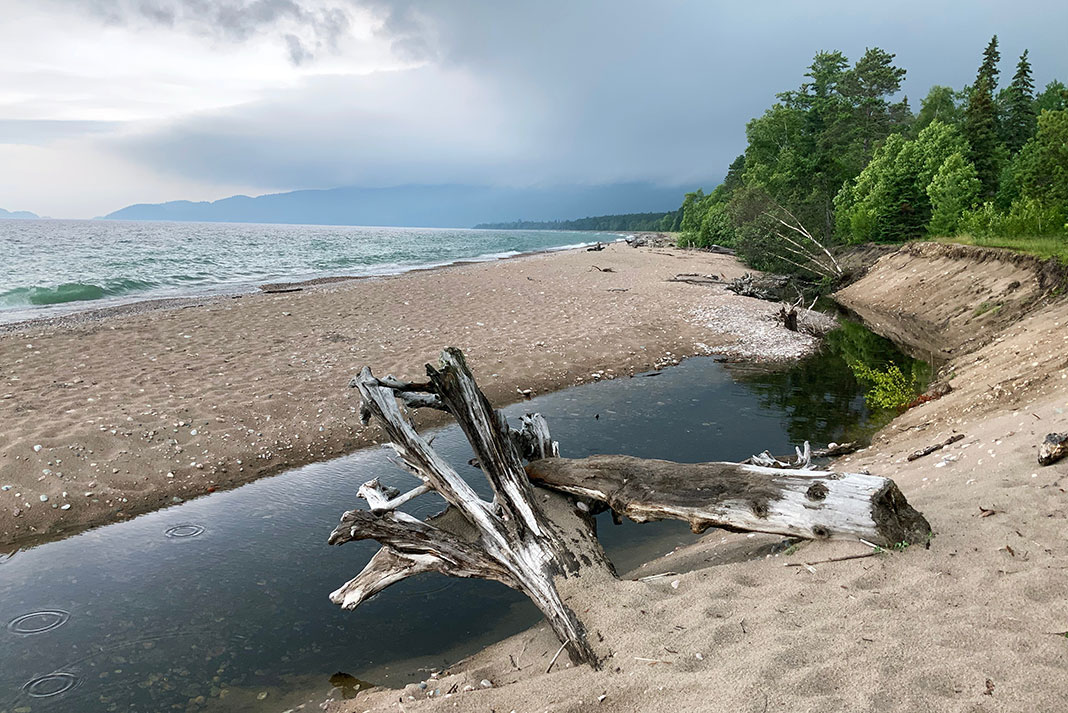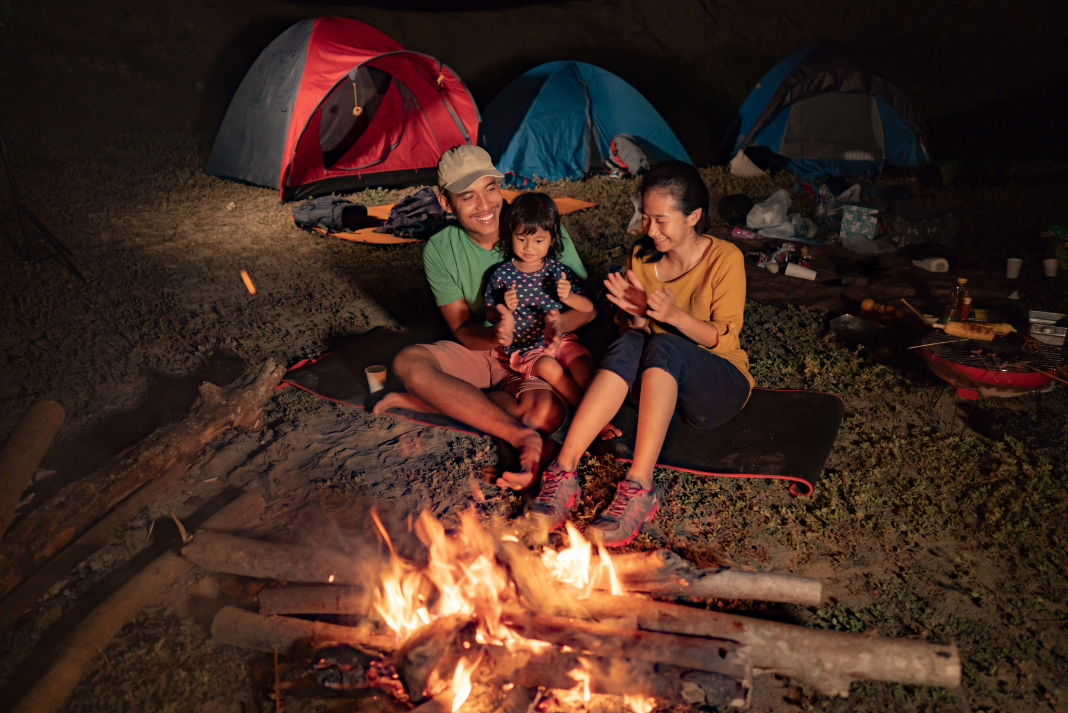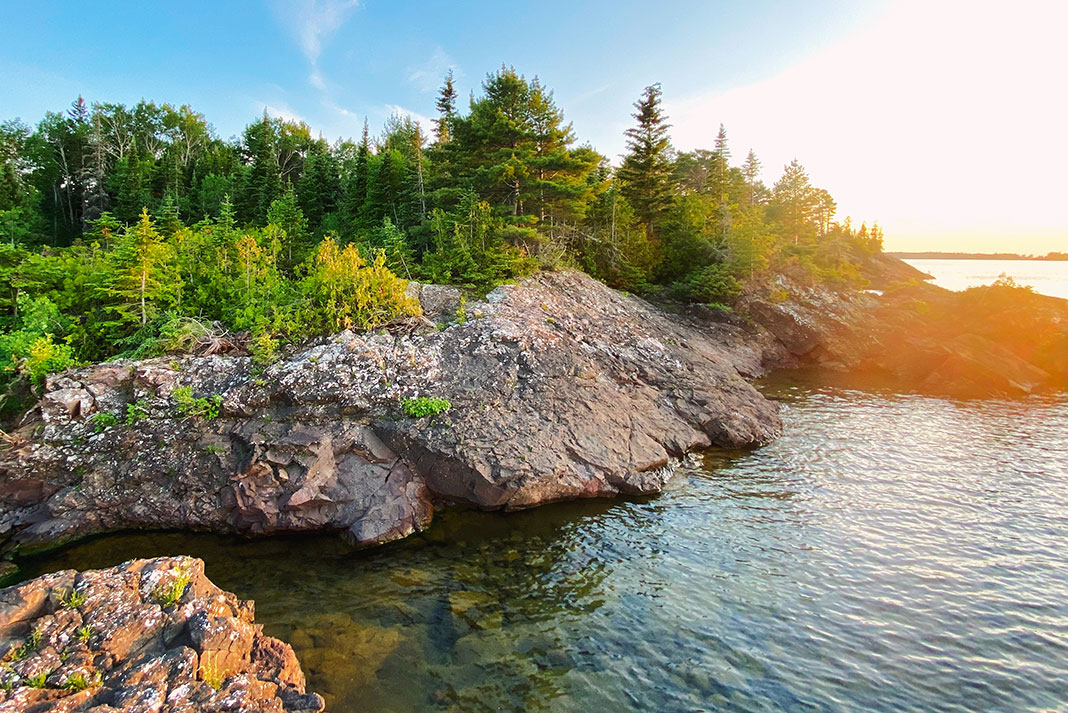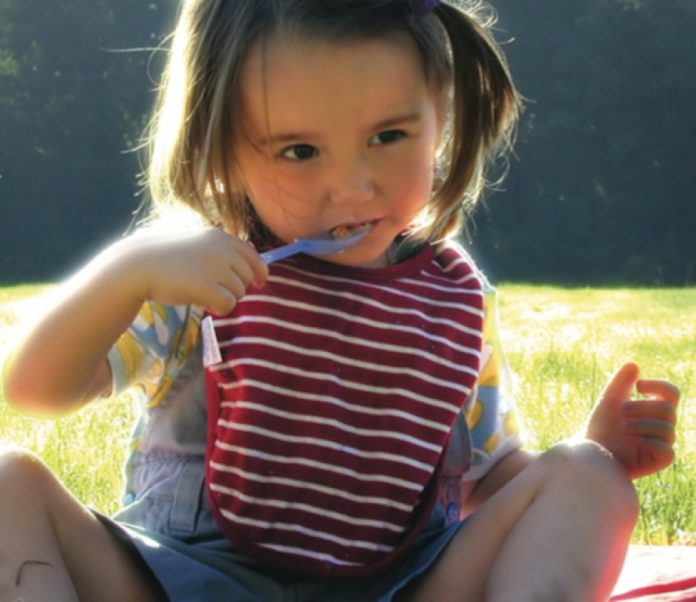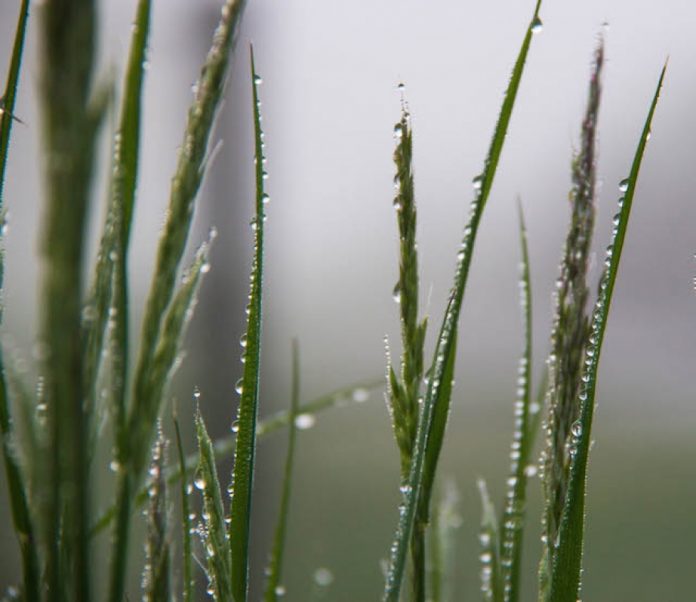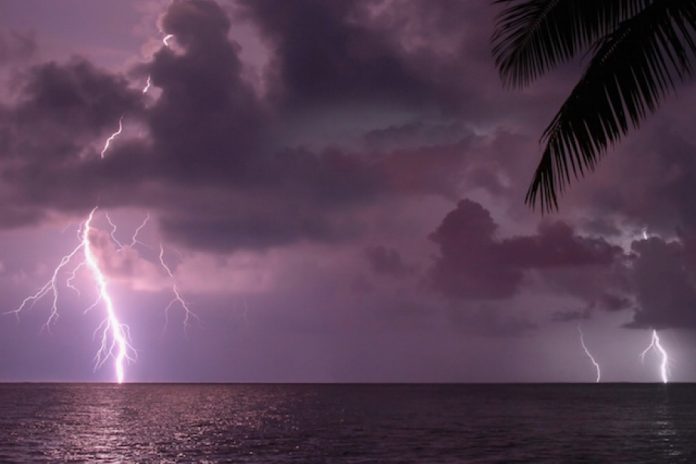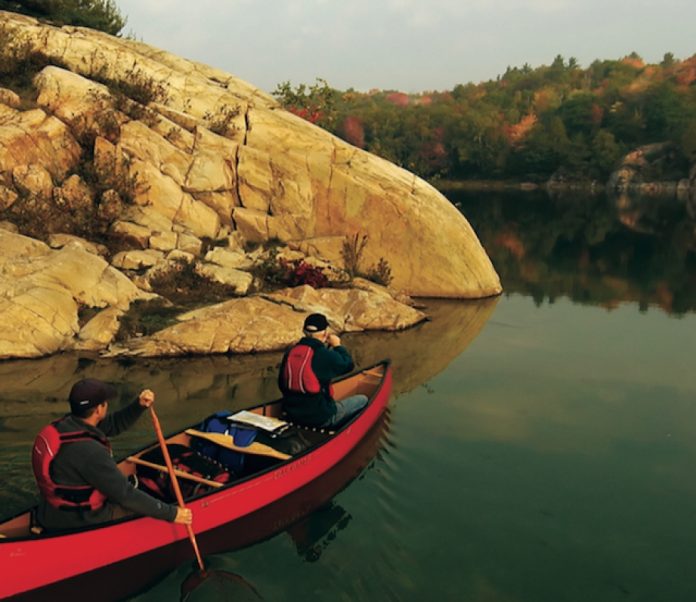Kim applied her pale pink lip gloss and tucked it into her borrowed drybag. She looked at the fasteners, turned the bag around, and looked some more. After a loose fold of the plastic, she clipped the ends together and carried the bag to her husband Chip who was loading their 16-foot cedar strip canoe.
With a few long strokes my husband Jim and I paddled away from the dock. This trip was our idea. Kim wanted to be introduced to wilderness canoeing and we wanted to show her.
I had a map showing the marker buoys of Nova Scotia’s Kejimkujik Lake spread across my lap. We rafted together so Chip and I could look over our route and Kim took the opportunity to further admire the scenery.
“I can’t believe how beautiful this is,” beamed Kim. Before us a series of small islands was sprinkled across a lake so smooth it mirrored the sun and a cloudless sky.
We began our eight-kilometre traverse of Keji toward the northwest arm. The excited chatter soon tapered, then our speed dropped. A gentle breeze began to redirect the bow of Chip’s boat as Kim rested her paddle over the gunwales and gazed in every direction.
After only two hours of gliding past islands and across small bays we turned our canoes into a small cove, our home for the night.
“Just in time,” Kim announced as we unloaded. “I was getting really tired.”
It started before dawn the next morning—first a mutter, then a mumble, then a moan. By breakfast the wind was a full-fledged scream.
“It’ll die down by mid-morning,” came a less-than-confident claim from Chip in the next tent.
“Lunchtime maybe,” came the update as the wind continued to howl.
By mid-afternoon I was sick of staring at whitecaps and wanted to paddle anyway. Kim and Chip were engrossed in a game of Yahtzee and waved us away.
Our plan for that day had been to paddle north into the Little River, a route that would have taken us straight up- wind across the open arm and into a likely wind tunnel.
“Chip doesn’t think they should paddle today,” Jim said as we unfolded the map to look for a sheltered route we could paddle ourselves as a day trip.
We pushed off from shore and bowed our heads into the wind. Soon we were sitting on our hats to keep them from blowing away and my arms were aching from pushing into a wind that seemed intent on and capable of pushing backwards.
Slowly the trees on the east shore grew in size and in less than an hour we eased into the area of calm beneath them.
The faint current leaving a nearby gap in the reeds told us it must be the mouth of the West River. We slipped through and entered another world. The wind roared overhead, but we were in a land of black glass and emerald grass. We paddled upstream, following the unhur- ried curves of the river and avoiding the pale granite rocks that punctuated the black water.
Billowing clouds scuttled across the sky. “What’ll we do if it’s still like this when we have to leave?” I asked.
“We’ll worry about it then,” Jim answered simply. There was no debate about that, so we turned our canoe and let the river take us gently to the lake where the wind caught us and pressed us back to camp. The Yahtzee match was just winding down.
“Do you hear that?” Chip asked from his tent the next morning? Silence answered. I was already down at the lake and could see as well as hear that the wind had ceased. Small ripples lapped at the beach and a thin layer of mist hovered over gleaming water, promising another day of clear skies.
By the time we were ready to leave, our nemesis the wind had returned, but this time as a friend. We turned our boats east around the point and felt its gentle hand on our backs.
“I’m worried Kim will think all trips are as easy as this,” Jim said as we laid our paddles over our gunwales and watched the shore glide by on our wind-assisted float.
After joining the current of the Mersey River for our final hundred metres. Jim and I swung through an easy eddy turn and pulled our canoe on shore. Behind us we heard raised voices and the grinding of canoe over rock. Jim waded knee-deep, grabbed the bow of Kim and Chip’s canoe and pulled them onto the beach.
Kim climbed out of the boat and threw her arms around us.
As Jim and I unloaded we heard Kim chatter with Chip about when they could come back. Jim and I shared a knowing look and he mumbled under his breath, “Let her enjoy it. She got off easy this time, but she’ll learn the difference between headwinds and tailwinds soon enough.”
Michelle and Jim Wiebe are Albertan paddlers who spent a year exploring the East Coast.
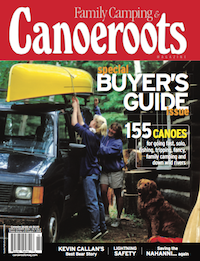 This article first appeared in the Spring 2006 issue of Canoeroots Magazine. For more great content, subscribe to Canoeroots’ print and digital editions here.
This article first appeared in the Spring 2006 issue of Canoeroots Magazine. For more great content, subscribe to Canoeroots’ print and digital editions here.



